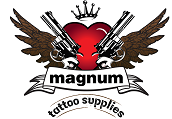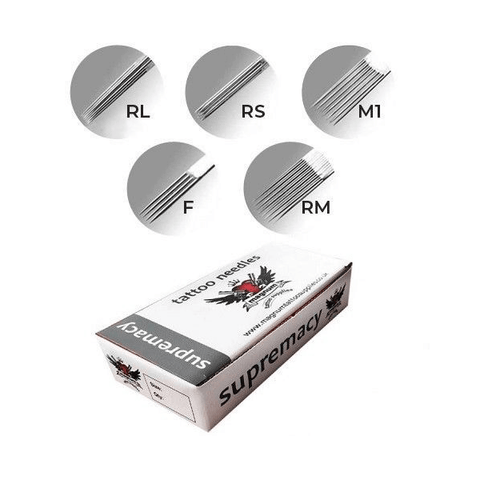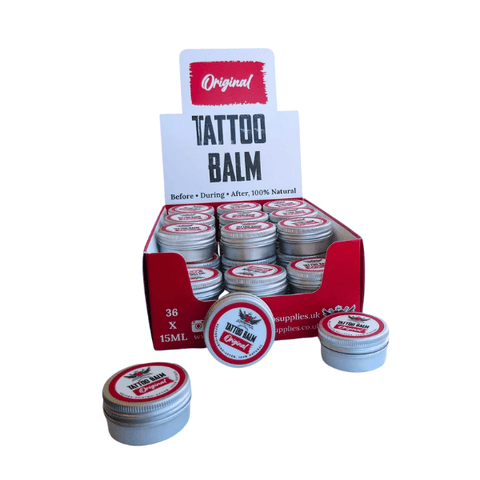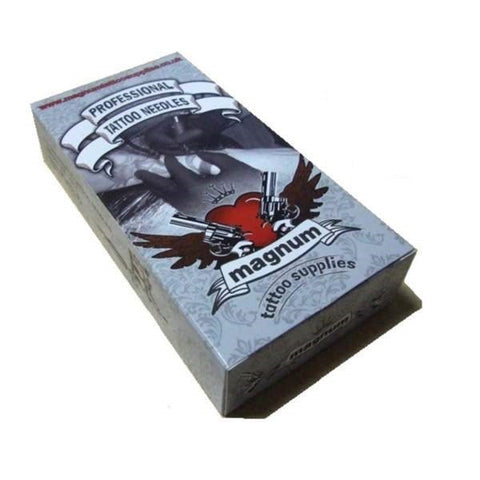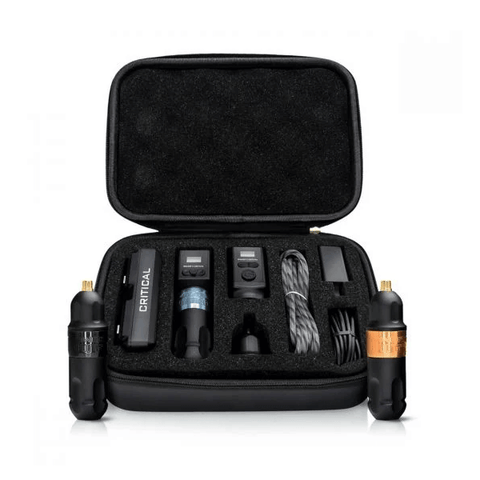Dotwork tattoo 101: Understanding this unique tattooing technique
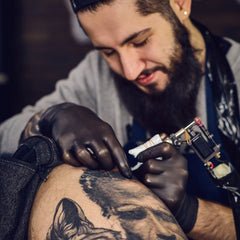
Dotwork tattoos, known for their intricate detail of countless tiny dots, offer a unique challenge and appeal in the tattooing world. This method demands great patience and precision from the artist and a high pain tolerance from clients, as the process can be more intense and time-consuming than traditional tattooing.
So, let's discuss the essentials of dotwork tattoos, their technique's origins, development, and the skills required to master them. Whether you're curious about the style or thinking about a dotwork piece for yourself, our guide offers everything you need to know.
What are dotwork tattoos?
Dotwork tattoos are a distinctive style of tattooing where the artist creates designs using numerous small dots. This technique builds up light and dark areas to form patterns, images, or shading effects, often resulting in a highly detailed, almost three-dimensional appearance.
Additionally, dotwork is especially popular for geometric designs, mandalas, and intricate spiritual or symbolic motifs. The precision and time required for dotwork make it a unique and visually striking tattoo art form.
Pointillism in dotwork tattooing
The connection between pointillism and dotwork tattooing is a fascinating journey through art history and cultural practices. The technique of pointillism, pioneered by artists like Georges Seurat and Paul Signac, involved creating images using small, distinct dots of colour applied in patterns to form an image.
This method laid the groundwork for what would later evolve into dotwork tattooing. This style uses similar principles but with ink on the skin.
Pointillism's influence on dotwork tattooing:
- Visual effect: Pointillism relies on the ability of the eye and mind to blend separate points of colour into a fuller range of tones, which dotwork tattoos replicate by using black and grey dots to create depth, shadow, and texture.
- Technique adoption: Like pointillism, dotwork requires a high level of precision and patience, with the artist placing each dot carefully to build up the desired effect and detail in the tattoo.
Historical roots and modern application:
- Ancient practices: Dotwork tattooing shares its lineage with some of the earliest forms of tattooing found on mummified remains like Ötzi the Iceman and ancient Egyptian mummies. These tattoos often utilised dots and lines in therapeutic or symbolic ways, suggesting a deep-rooted cultural significance.
- Contemporary Relevance: Today, dotwork tattoos are appreciated for their aesthetic appeal and less for medicinal benefits. They're especially popular for their softer, more subtle impact compared to the bold lines of traditional tattoos, making them a preferred style for those seeking visually intricate and less aggressive designs.
Key characteristics of dotwork tattooing
Dotwork tattooing is a distinctive style of tattooing that is known for several key characteristics:
- Dots as the primary element: The most defining feature of dotwork tattoos is their construction using numerous small dots to create an image or pattern. Unlike traditional shading techniques that use lines and varying shades, dotwork uses dots of different densities and sizes.
- Gradation and texture: By varying the spacing and size of the dots, artists can create different textures and shades, from very light to very dark. This technique allows for subtle gradation that can give the tattoo a three-dimensional look.
- Black and gray aesthetics: Dotwork tattoos are often done in black or grey ink. The focus on monochrome using black ink highlights the precision of the dots and the gradations that can be achieved without the use of colour.
- Geometric and organic patterns: Dotwork is particularly popular for geometric patterns, designs, and organic shapes. This can include intricate mandalas, detailed animal patterns, and other motifs that benefit from the detailed dot technique.
- Meditative and precise: Creating a dotwork tattoo is time-consuming and needs a lot of patience and precision from the tattoo artist. It's often considered a more meditative form of tattoo art.
- Minimalistic yet detailed: While dotwork tattoos can be minimalist, they can also have extremely detailed and intricate designs that create a stark impact with the contrast between the inked and non-inked skin.
Needles used for dotwork
Dotwork tattooing requires specific types of tattoo needles to achieve its unique, detailed, and precise designs made up of tiny dots. Here are the main types of needles used in dotwork tattooing:
- Single needle: Often, a single needle or a very fine grouping (such as a three-round liner) is used for dotwork tattoos. These needles are essential for creating the tiny, precise dots that define the dotwork style. A single needle is ideal for detailed work and small, intricate designs.
- Round liner needles: Round liner needles, which can come in small configurations like three or five needles grouped tightly together, are also commonly used in dotwork. These needles allow for slightly larger dots and are effective for outlining and detailed dotwork.
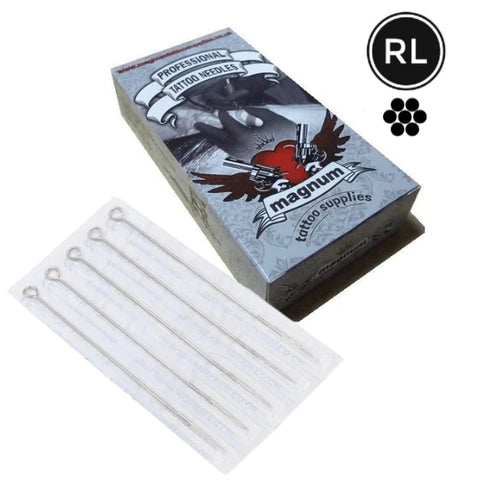
- Round shader needles: For larger areas of dotwork that require denser shading or a gradient effect, round shader needles might be used. These needles can be grouped more loosely than liners and can create a softer dot that blends more smoothly with adjacent dots.

- Magnum needles: In some cases, where large areas need dot shading, magnum needles might be used. These needles are configured in rows and allow for covering larger areas more quickly. However, they are less common for the finest dotwork than single needles and round liners.

Each needle type contributes differently to the tattoo process:
- Single needles are best for fine and detailed work, allowing for high precision.
- Round liners provide versatility, making them suitable for both fine lines and dotwork.
- Round shaders and magnum needles are better suited for filling larger areas with dots, helping to create gradients and shades with varying densities.
Technique differences: manual vs. machine
Machine Dotwork Tattooing
- How it works: Uses an electric tattoo machine that moves the needle up and down automatically.
- Speed: Faster, making it more efficient for larger tattoos.
- Consistency: Provides even dots and depth, good for precise, uniform designs.
Manual Dotwork Tattooing (Hand Poke)
- How it works: The artist uses a needle attached to a handle to manually poke the skin, without using electricity.
- Gentleness: Generally less painful and quieter, providing a more relaxed experience.
- Control: Offers the artist more direct control, which can give the tattoo a unique, handcrafted feel.
Choice factors:
- Machine tattooing is quicker and more suitable for detailed or large designs.
- Manual tattooing is slower but less painful and gives the tattoo a distinctive, artisanal look.
Considerations before getting a dotwork tattoo
Pain and duration of the tattooing process
- Pain: Dotwork tattooing, like any tattooing, involves needles piercing the skin, which naturally causes some level of discomfort or pain. The level of pain can vary widely depending on the tattoo placement and your own pain tolerance. Areas with more flesh tend to hurt less than bony areas. Dotwork can sometimes be less painful than other forms of tattooing because it often doesn't involve the same level of continuous line work, but this can vary.
- Duration: The time it takes to complete a dotwork tattoo can be longer than other styles. Because this technique involves creating detailed patterns and shades by placing many small dots, it requires a lot of precision and patience. A small, simple design might only take an hour or two, but large or highly detailed designs can take several sessions, sometimes spread out over months.
Longevity and ageing of dotwork tattoos
- Longevity: Dotwork tattoos, particularly those with finer details, can be prone to fading over time more than solidly filled tattoos. The density and depth of the dots play a significant role in how well the tattoo ages. Properly applied dotwork with sufficient depth can help ensure that the tattoo remains distinct and clear as it ages.
- Ageing: As with all tattoos, dotwork designs will age and may blur slightly over time. The rate and extent of this blurring depend on factors such as skin type, exposure to sunlight, and the ink quality used. To mitigate this, following aftercare instructions diligently and protecting the dotwork tattoo from excessive sun exposure is important. Regular touch-ups can also help maintain the sharpness and clarity of the design.
Final thoughts
Dotwork tattooing is a unique and intricate style known for its detailed designs made up of tiny dots. This technique is perfect for creating complex geometric patterns and delicate illustrations. Dotwork remains a favourite among those who appreciate its subtle yet expressive artistic quality as it continues to grow in popularity.
- Tags: articles dotwork tattoo
- Mark Joshua Luz
